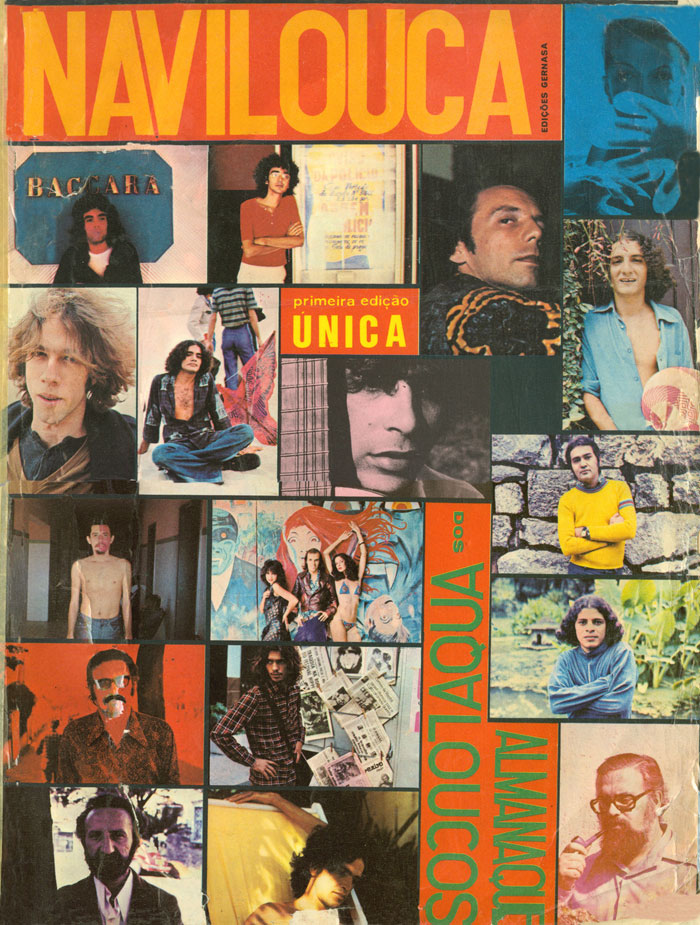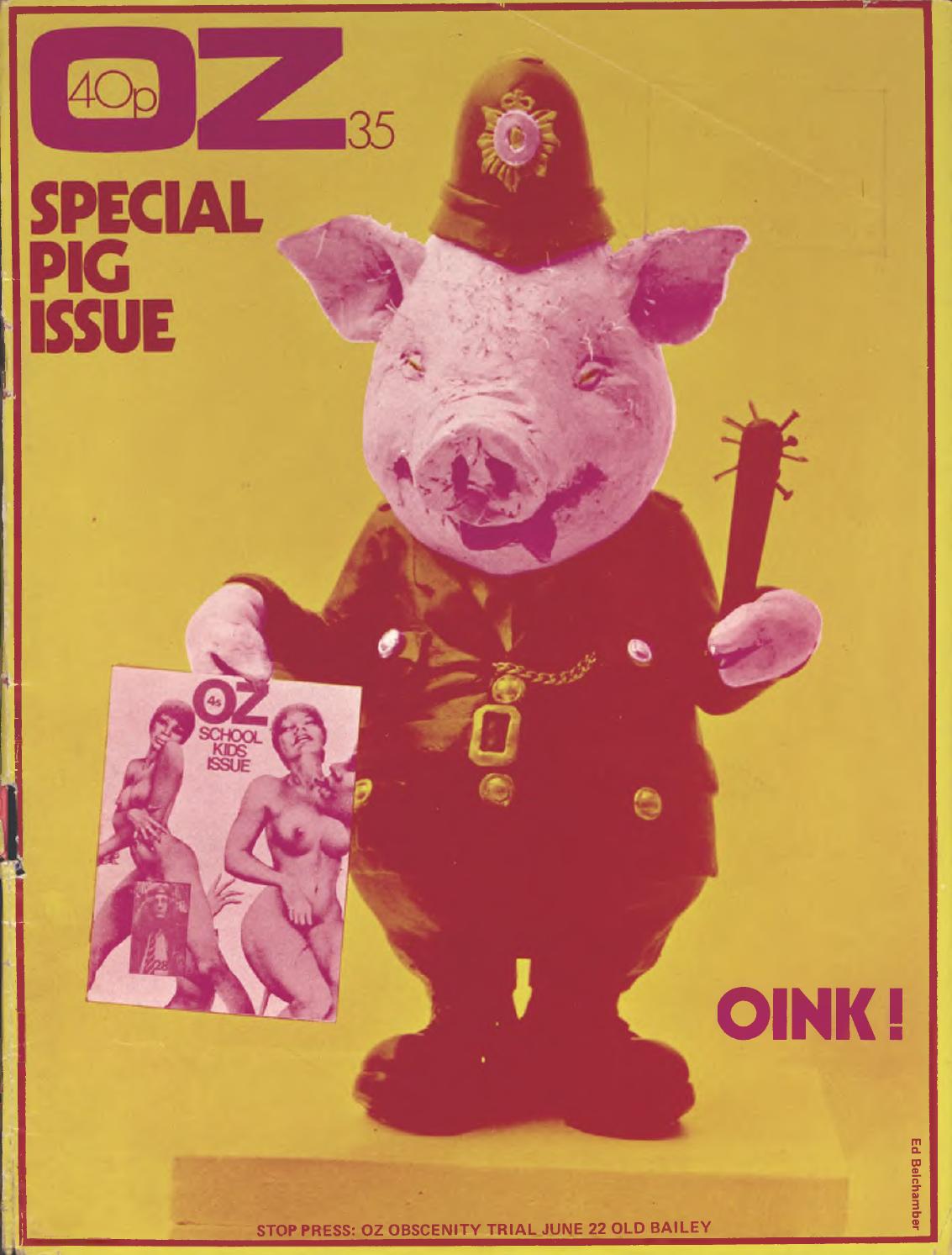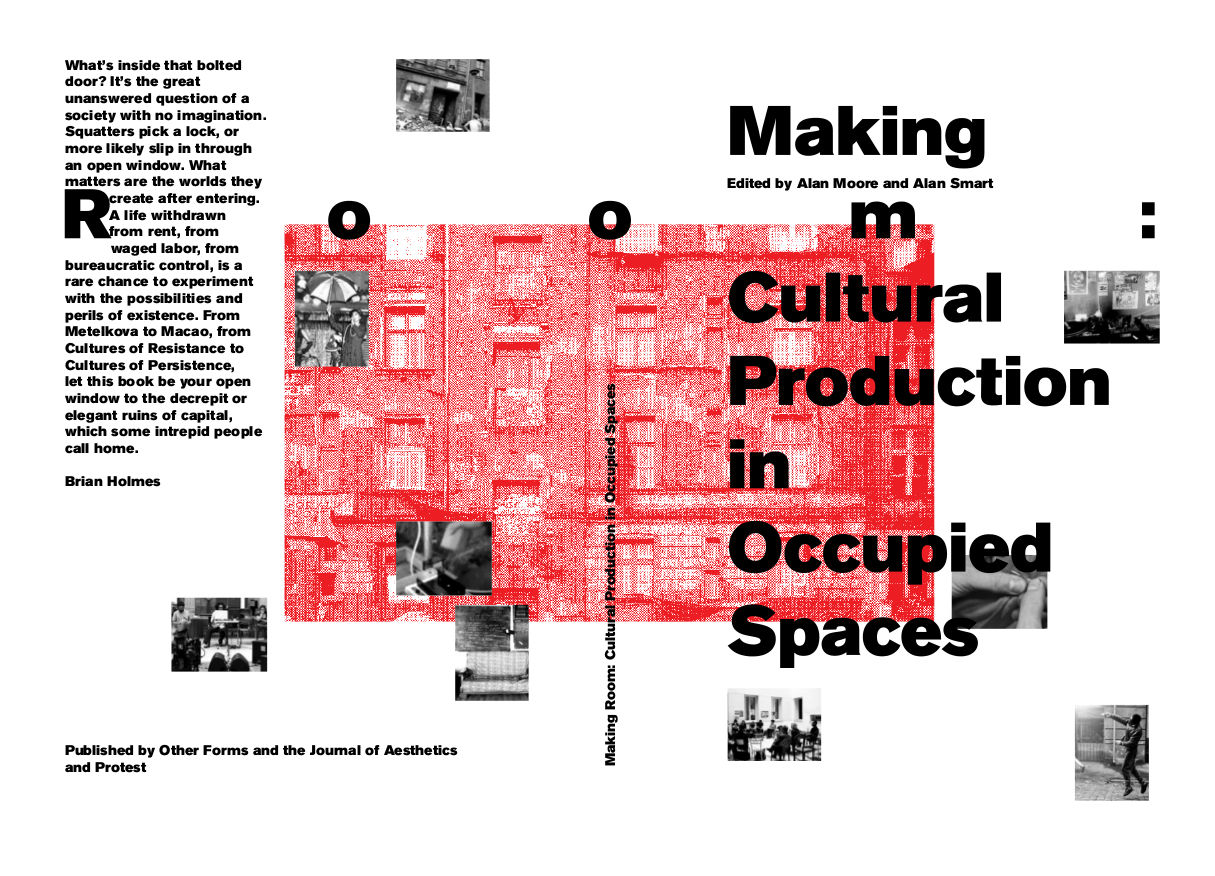Navilouca: almanaque dos aqua-loucos (1974) [BR-PT]
Filed under artist publishing, magazine | Tags: · art, brazil, cinema, concrete art, concrete poetry, counterculture, poetry, tropicalia

Navilouca is a Brazilian avant-garde art and poetry magazine, of which only a single issue appeared, in 1974.
“Navilouca foi uma revista de poesia e arte de vanguarda brasileira, que circulou apenas uma edição, em 1974.
Inspirados pelas publicações do Concretismo, como Noigandres e Invenção, os poetas Torquato Neto e Waly Salomão elaboraram em 1971 o projeto de uma revista que revelasse a produção poética experimental do Brasil da época, influenciada pelo Tropicalismo e pela contracultura.
A revista teve projeto gráfico de Óscar Ramos e Luciano Figueiredo. Em formato grande (27 x 36 cm), apresentava-se já na capa como “edição única”, funcionando como uma antologia de poetas experimentais. No enanto, o grupo não conseguiu reunir os recursos necessários para imprimir e distribuir a sua criação.
Torquato morreu em 1972, sem conseguir ver a revista publicada. Com a intermediação de Caetano Veloso, Waly conseguiu que André Midani, executivo da Polygram, apoiasse a ideia. Navilouca foi finalmente lançada em 1974 e oferecida como brinde de Natal a clientes da gravadora. Em 1975, alguns exemplares foram distribuídos e vendidos em livrarias.” (Wikipedia)
With Augusto de Campos, Rogério Duarte, Torquato Neto, Waly Salomão, Décio Pignatari, Duda Machado, Hélio Oiticica, Jorge Salomão, Stephen Berg, Luiz Otávio Pimentel, Chacal, Luciano Figueiredo, Óscar Ramos, Ivan Cardoso, Lygia Clark, Caetano Veloso, and Haroldo de Campos.
Edited by Torquato Neto and Waly Sailormoon
Publisher Edições Gernasa e Artes Gráficas, Rio de Janeiro, [1974]
[92] pages
PDF (24 MB; missing pages 4, 29, 44, 45, 48, 49; assembled from JPEGs on Torquatoneto.com.br, Urubuweb and Internet Archive)
Comment (0)Oz Magazine (1963-73)
Filed under magazine | Tags: · cartoon, censorship, counterculture, drugs, gender, hippies, humour, music criticism, politics, rock, satire, sexuality, underground


“Having outraged the Australian establishment with a satirical magazine called Oz, the editor and founder Richard Neville and artist and cartoonist Martin Sharp hightailed it to swinging London. They immersed themselves in the alternative culture of artists, activists, writers and musicians who operated underground of the mainstream.
This underground fuelled by the optimism and excitement of the time and financed largely by the rock aristocracy and dope dealing wanted to change the world. Richard Neville relaunched Oz magazine in the same satirical style as the Australian version, it was not long before L.S.D. altered minds and Oz exploded into a riot of colour and along with the already existing IT newspaper became a mouthpiece for the underground. Oz lasted for 48 issues from the start of 1967 to the end of 1973.” (Source)
“Oz was a focal point for many confrontations between progressive and conservative groups over a range of issues including the Vietnam War, drugs, the generation gap, censorship, sexuality, gender politics and rock music, and it was instrumental in bringing many of these concerns to wider public attention. Above all, it focused public attention on the issue of free speech in democratic society, and on how far short of the ideal Australian and English society actually was at that time.
Through both its lives, the two key figures in Oz were Neville and Sharp, but the ‘honour roll’ of Oz alumni includes many famous names like Robert Hughes, Richard Walsh, Germaine Greer, Jim Anderson, Felix Dennis and Charles Shaar Murray.” (Source)
Published in Sydney, 1963-69, and London, 1967-73
PDFs of Oz’s precursor, The Arty Wild Oat (2 issues, 1962)
PDFs of Sydney version (42 issues)
PDFs of London version (48 issues)
OZ & Yellow House Collections, gallery (1960s-70s)
Alan Moore, Alan Smart (eds.): Making Room: Cultural Production in Occupied Spaces (2015)
Filed under book | Tags: · activism, anarchism, art, counterculture, cultural production, diy, social movements, squatting

“An anthology of voices from the post-1968 squatting movement in Europe and beyond. It focuses on creative production and cultural innovation driven by squats. Squatting is certainly a tactic which has enabled a tremendous body of collective culture work to be done, and new kinds of lives to be lived. Making Room lays it out in the words of those who did it and study it.
The dark matter undercommons of disobedient culture surveyed in this book begins its roam in a theoretical introduction that includes autonomist theory, ‘monster institutions’ and simple economic justice. It moves from north to south, portraying by country some specific local conditions of an international movement.”
With contributions by Miguel Ángel Martínez López, Alan W. Moore, Stevphen Shukaitis, Universidad Nómada, Tino Buchholz, Vincent Boschma, Geert Lovink, Alan Smart, Aja Waalwijk, Jordan Zinovich, Britta Lillesøe,Tina Steiger, Mikkel Bolt Rasmussen, x-Chris, Kasper Opstrup, Azomozox, Ashley Dawson, Sarah Lewison, Azomozox, Nina Fraeser, Julia Ramírez Blanco, Tobias Morawski, Eliseo Fucolti, Gianni Piazza, Assembly of Teatro Valle, Patrick Nagle, Emanuele Braga, Margot Verdier, Vincent Prieur, Jon Lackman, Jacqueline Feldman, Julia Lledin, Elisabeth Lorenzi, Julia Lledinm, Stephen Luis Vilaseca, La Casa Invisible, Stephen Luis Vilaseca, Yasmin Ramirez, Gregory Lehmann, Sutapa Chattopadhyay, Jasna Babic, Tristan Wibault, Galvao Debelle dos Santos, E.T.C. Dee, Spencer Sunshine, Maxigas, and mujinga.
Co-published by Journal of Aesthetics & Protest and Other Forms, October 2015
Designed by Other Forms
Translation Milena Ruiz Magaldi and Jeannette Petrik
Open access
ISBN 9780979137792
355 pages
PDF (27 MB)
PDF (G Drive, from publisher)

